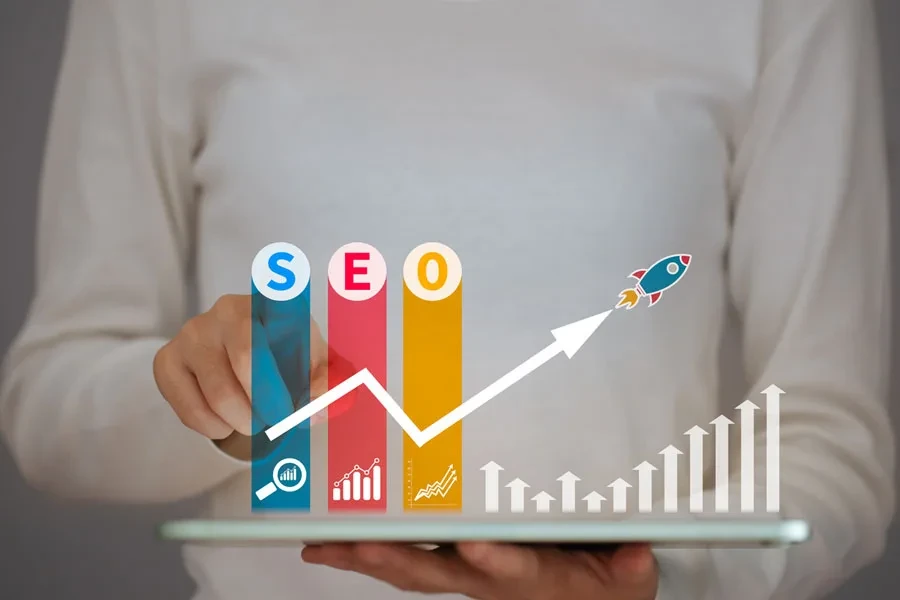Custom web development directly affects Core Web Vitals and SEO rankings by improving site speed, responsiveness, and stability. These performance metrics are integral to Google’s search algorithm, making technical optimization not just beneficial but necessary for competitive positioning. Partnering with a Website Development Company that specializes in custom solutions can ensure your site outperforms template-based alternatives through streamlined code, tailored asset delivery, and minimal bloat.
From a search perspective, Google’s Page Experience signals — including Core Web Vitals — now influence ranking across all mobile and desktop searches. Failing to meet baseline performance thresholds can reduce visibility and lead to lower organic traffic. Businesses that prioritize these technical metrics through precise development practices see measurable improvements in both user experience and search visibility.
Plant Powered Marketing evaluates web performance using real-world field data (CrUX reports) and applies direct development refinements that target each Core Web Vital component for long-term SEO impact.
Core Web Vitals Metrics and Their SEO Relevance
| Metric | Description | Google Threshold | SEO Relevance |
|---|---|---|---|
| Largest Contentful Paint (LCP) | Measures loading performance | < 2.5s | Faster LCP improves user satisfaction and reduces bounce rate |
| First Input Delay (FID) | Measures interactivity | < 100ms | Lower FID boosts engagement and interaction |
| Cumulative Layout Shift (CLS) | Measures visual stability | < 0.1 | Stable layout helps avoid user frustration and improves trust |
| Interaction to Next Paint (INP) | Replaces FID as of March 2024 | < 200ms | Better responsiveness improves usability and behavior metrics |
Comparison Between Custom and Template-Based Development
| Feature | Custom Development | Template-Based Development |
|---|---|---|
| Code Efficiency | Optimized for specific use cases | Generic and often bloated |
| Page Speed | High (when developed correctly) | Moderate to low |
| Core Web Vitals Performance | Consistently optimized | Variable, often below thresholds |
| SEO Control | Full access to on-page and technical elements | Limited customization |
| Scalability | Built for long-term growth | Requires retrofitting or migration |
Technical Specifications That Influence Core Metrics
| Factor | Custom Development Benefit | SEO Impact |
|---|---|---|
| JavaScript Execution | Reduced and deferred | Improves INP and LCP |
| CSS Management | Modular, scoped styles | Reduces CLS issues |
| Image Optimization | Lazy loading, modern formats (WebP/AVIF) | Improves LCP |
| Server Response | Tailored server config (e.g., HTTP/2, CDN) | Enhances LCP and Time to First Byte |
| DOM Size | Kept minimal | Improves overall speed and indexing |
Region-Specific Considerations for Vancouver, WA
Vancouver-based businesses benefit from optimizing load times for both urban and rural internet speeds. Sites must balance asset delivery for users on high-speed fiber and slower DSL connections. Plant Powered Marketing recommends critical CSS inlining and server-level compression to meet local performance expectations.
Bonus Tip: Use geolocation-based CDN edge rules to serve content faster to regional audiences across Washington and Oregon.
Things to Consider Before Making a Decision
- Existing CMS Limitations: Evaluate how much flexibility your current platform allows for custom optimization.
- Budget vs. Long-Term ROI: Upfront investment in custom development often leads to lower maintenance costs and higher conversions.
- Developer Expertise: Ensure access to developers with experience in optimizing performance, not just functionality.
- Content Strategy Integration: Align development decisions with SEO and content publishing workflows.
- Ongoing Monitoring: Look for solutions that allow ongoing Core Web Vitals tracking and issue remediation.

Practical Services to Improve SEO and Core Metrics
Plant Powered Marketing offers services that directly contribute to measurable improvements in both Core Web Vitals and search rankings:
- Website Development Services: Custom builds designed for speed, stability, and SEO performance.
- Professional SEO Services: Technical audits, schema integration, and ongoing optimization.
- Google My Business Services: Enhancing local visibility and search footprint with structured data.
- Lead Generation Services: Conversion-focused builds that leverage speed and usability to drive engagement.
Get Expert Development Guidance
To optimize Core Web Vitals and improve your SEO results, choose solutions that prioritize performance from the ground up.
Plant Powered Marketing | Vancouver, WA Phone: +1 360-519-5100 Email:[email protected]
Common Questions About Web Performance and SEO
What is the ideal Core Web Vitals score for SEO ranking?
A “Good” score in all Core Web Vitals is recommended: LCP < 2.5s, INP < 200ms, CLS < 0.1.
Can page builders meet Core Web Vitals requirements?
Rarely. Most generate bloated code and load unnecessary scripts.
How long does it take to see SEO improvements after optimization?
Usually 4–8 weeks, depending on crawl frequency and changes made.
Is Core Web Vitals compliance enough to rank well?
No. It improves UX and retention but must work alongside content and backlinks.
Do mobile scores affect desktop rankings?
No direct crossover, but mobile-first indexing makes mobile performance critical.
FAQ
How does custom development reduce CLS issues?
By reserving space for assets like fonts and images and avoiding unstyled content flashes.
What tools can monitor Core Web Vitals post-launch?
Google Search Console, PageSpeed Insights, and web-vitals JavaScript libraries.
Can custom-built sites be slow?
Yes, if poorly coded. Speed comes from efficient design, not just customization.
Does server location impact performance?
Yes. Closer servers reduce latency. Use CDN to bridge geographic gaps.
Is Core Web Vitals a ranking factor in all industries?
Yes, but it’s more impactful in competitive sectors like eCommerce and finance.
- How to Build a Strong Brand Voice on Social Media? - August 16, 2025
- From Click to Client: The Journey of a Lead in Professional Services - August 16, 2025
- How Vancouver, WA Businesses Can Improve Online Reviews with Digital Strategies - August 16, 2025

